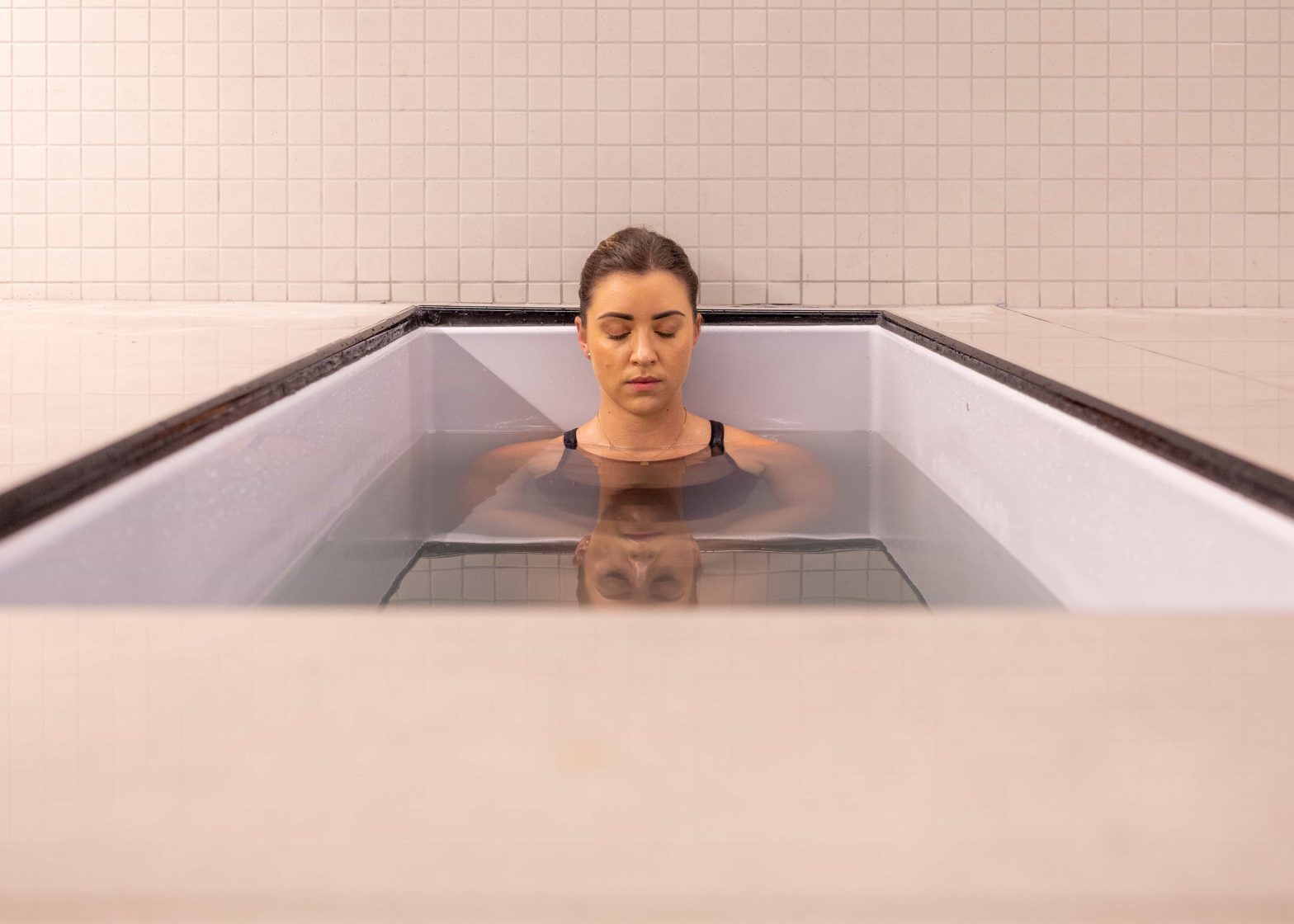The best ways to speed up muscle strain recovery include using the RICE method, which is rest, ice, compression, and elevation. Others have found heating packs to be helpful, or using certain therapies such as infrared saunas, contrast therapy, and ice baths. Keep reading to learn more about how you can speed up your muscle strain recovery to get back to comfortable training.
What Is Muscle Strain?
A muscle strain occurs when the muscle has been stretched too much to the point of tearing. It’s otherwise known as a pulled muscle, and it can be incredibly painful. Depending on how large the tear in the muscle is, you may need to see a doctor for the correct treatment plan. A muscle strain can be caused by overusing the muscle, using it in the wrong way, or a complete accident.
You may be more likely to strain your muscles if you engage in too much physical activity without proper rest, do not spend enough time warming up before exercising, or have poor flexibility. You might also be more at risk if you begin exercising at a higher level than you’re used to, putting your body under more strain than it’s used to.
Pulled muscles don’t always happen when you’re exercising. You could also be lifting an object that’s too heavy or lifting improperly. If you suffer from chronic poor posture, you might also be more at risk of suffering a pulled muscle.
Signs You Have Muscle Strain
Muscle strains tend to be most common in the hamstrings, shoulders, lower back, and neck. You may see a number of symptoms located in and around these areas that might indicate a pulled muscle, including:
- Bruising, redness, or even swelling around the muscle site
- Muscle weakness
- Difficulty of using the muscle or limited range of motion
- Sudden pain when using the muscle
- Pain when resting the muscle
Injured muscles can range in severity, so it’s always advisable to see a doctor if you’re concerned about any symptoms, including a significant amount of pain, trouble walking, high fever, broken skin on the injury side, major swelling, and a popping sound when the injury occurs.
Muscle Strain Recovery Treatments
Once a healthcare professional confirms your muscle strain, you may be given a treatment plan depending on the severity of your injury. You might be prescribed muscle relaxers, anti-inflammatories, and targeted physical therapy. However, most pulled muscles are more than capable of being treated at home with at-home treatments, including:
- Rest: Rest is often the most common treatment for pulled muscles, and a few days of rest will often do wonders for a muscle strain. If it’s a minor strain, you may start feeling better after just two days.
- Ice: While resting, you can apply ice to your injured muscle to help it recover faster. General advice recommends icing your muscle for 20 minutes every hour you’re awake to reduce swelling and inflammation. Wrap your ice pack in a towel before placing it on your muscle to avoid burning yourself.
- Compression: An elastic bandage’s compression can also help reduce swelling. While it’s tempting to wrap the muscle as tightly as possible to speed up muscle strain recovery, this can also reduce blood circulation, which can actually slow down your treatment.
- Elevation: Elevating the muscle will also help to reduce the swelling, so make sure you keep it up for as long as possible while you’re resting.
- Heat: Many people have also had success with using heat pads on their strained muscles. Use a heating pad a few times a day for three days to hopefully see a reduction in your symptoms. Just like an ice pack, wrap your heating pad in a towel before placing it on your muscle.
Equipment At TH7 That Can Help Your Body Recover From Muscle Strain
As you can see, there are plenty of ways to help speed up muscle strain recovery at home. However, you can also use a range of equipment to improve recovery time. TH7 offers several options that can help aid muscle strain recovery, including:
Infrared Saunas
TH7 also has infrared saunas that can be excellent for speeding up muscle strain recovery. Evidence suggests that sessions in the infrared sauna can improve the production of human growth hormone, a vital component in repairing muscles and tissues.
Other studies have shown that deep penetration of infrared heat, mild temperature, and light humidity infrared saunas can appear favourable for the body to recover from strained muscles. The comfortable and relaxing environment of an infrared sauna can also help relax the muscles and help alleviate pain, helping you to recover quicker while staying more comfortable during the entire process.
Compression Therapy
TH7’s compression therapy uses Pulse Technology to mimic muscular contractions that help move lymph fluid throughout the body. This helps the muscles feel refreshed and energised, and the compression can help reduce swelling to promote healing much faster. Studies have shown that compression garments can enhance recovery and reduce stiffness, hopefully quickening the overall recovery period.
Dynamic compression also improves blood flow through the muscles, helping to warm and stretch them which can increase your range of motion. Improving the flexibility of your muscles can help prevent future injury, so regular compression therapy can help you in more ways than one.
Ice Baths
Getting into a freezing cold ice bath when you’re in pain might not sound like the most appetising form of treatment, but it really can make all the difference with muscle strain recovery. Ice baths can improve blood flow, reduce inflammation and swelling, and help muscle recovery in the long run. Cold water immersion has been shown to be a popular method in exercise-induced muscle damage, with some participants seeing beneficial results immediately after treatment.
Cold water therapy is similar to icing your muscles at home, alleviating swelling and inflammation. This can constrict blood vessels to reduce swelling to minimise pain, making ice baths an effective treatment plan for athlete recovery.
Red Light Therapy
Red light therapy can also increase the rate and quality of tissue repair, helping to improve muscle performance, enhance recovery, and reduce pain. It can also reduce pain and inflammation to help you get back to training quicker, which is a great help when you’re worried your pulled muscle is going to set you back in your regime. As red light therapy is still quite a new treatment, there isn’t too much research on it in regards to treating muscle strain. However, all of the benefits we have just described make it an excellent candidate for aiding recovery, if not shortening it.
Contrast Therapy
Contrast therapy uses both hot and cold water immersion pools to stimulate the body’s natural healing processes. The sudden switch in temperatures can create a pumping effect on your blood vessels, helping improve blood flow and nutrient delivery throughout the body. It can also help reduce stress, improve mood, boost mental clarity, and much more.
Research has shown that contrast therapy can support the recovery of muscle function after damage, helping to mitigate inflammation and reduce muscle strain recovery time. Both hot and cold water therapy can also ease pain and swelling, which can make recovery more comfortable by relieving tension and, therefore, decreasing negative sensations.
How To Prevent Future Injuries
There are many ways you can prevent restraining your muscles – because the last thing you want to do is to be put through this pain again! Luckily, there are a number of ways you can prevent pulling a muscle, including:
- Take some time out of your day to stretch your muscles properly
- Warm up your muscles before each exercise session
- Keep hydrated while exercising
- Allow your body to properly heal from injuries
- Cross-train for sports to strengthen your muscles, such as weight-lifting
- Eating foods high in potassium before exercise, such as bananas or avocados
You can also talk to your healthcare professional about how to prevent future injuries. Pulled muscles might be more susceptible to future injuries, so it’s essential that you look after yourself to prevent them from becoming recurrent issues.
Final Thoughts
Muscle strains are never fun, and they can occur for a number of reasons. Your doctor will most likely recommend plenty of rest, ice, compression, and elevation to help speed up your muscle recovery, but there are also several therapies to speed up muscle strain recovery. TH7 offers plenty of these for you to utilise, including compression therapy, infrared saunas, ice baths, contrast therapy, and red light therapy. These can help reduce swelling, alleviate pain, and improve blood flow to your injured muscle, helping speed up the recovery process and getting you back to your fighting fit.




